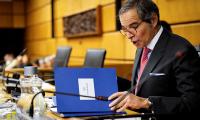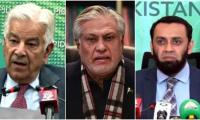The Digital Media Wing (DMW) of the Ministry of Information and Broadcasting’s report, titled ‘Anti-State Trends: Deep Analytics Report’, has generated headlines, social media buzz, memes and a fair amount of controversy. Trying to analyze the ‘Analytics Report’ itself is an interesting undertaking since it seems to have been mostly based on assumptions that are hard to substantiate and poor analytical tools. This is disturbing, coming from a regime that consistently takes upon itself the responsibility to guide both the message and the medium in the country. The said report purports to unveil what it says are ‘anti-state trends’ propagated on social media by – according to the report – elements in India and Afghanistan. The report tries to prove this by ‘analyzing’ hashtags on Twitter and establishing a correlation of hashtags with anti-state elements.
Independent observers and analysts have raised concerns about the accuracy of the assumptions and conclusions in the report. According to experts of the digital world, hashtag analysis to determine trends is an unreliable approach to use since it is near-impossible to prove anything by mere hashtag use. One wonders what exactly the government was trying to show by compiling more than 80 pages of screenshots of people’s tweets, some of which were glaringly unrelated or opposite to the thesis presented by the government. We are living in an age of intense technological progress. We are also living at a time of great conflict around us, as is evidenced by the happenings in Afghanistan. To be irresponsible in tone and message at such a time is bizarre. The report would have done better by biding its time, doing real research and presenting a detailed analysis that did not end up using hashtags to cast aspersions on regular social media users from Pakistan, some of whom include known journalists and politicians. Moreover, one-fifths of all tweets used in the study came from just three persons.
Adding a disclaimer in the report which clarifies that even if an account is listed in the report it does not imply that the content of the tweet was anti-state makes the whole exercise even more odd – why add the tweets in the first place then? That said, there is every possibility that states are using social media sites, trends, hashtags, bots in their propaganda war. Proving that would probably take more work than compiling hashtags and screenshots. One hopes the government rethinks its approach to data analysis and reports regarding social media. The state has already adopted a nanny approach towards citizens’ use of the internet; it must not alienate the people even further by making them feel they are seen as anti-state even if they just air legitimate grievances.
Fisherfolk community has long been sidelined, their voices drowned by clamour of more powerful actors
Earlier this month, 27 people were martyred and 40 injured in suicide explosion at Quetta’s railway station
Medical experts estimate that global deaths attributable to AMR could reach 2 million in 2050
G20 leaders met to address global challenges and crises and promote strong, sustainable, and inclusive growth
Day aims to affirm need to eliminate child sexual exploitation, abuse and violence
Chief Minister House Khyber Pakhtunkhwa has become centre of PTI’s political activities







